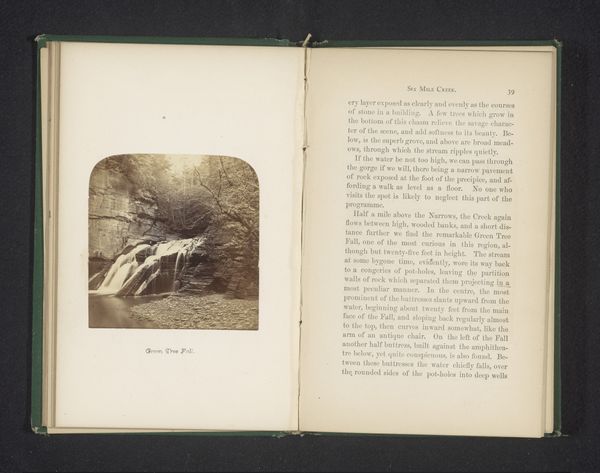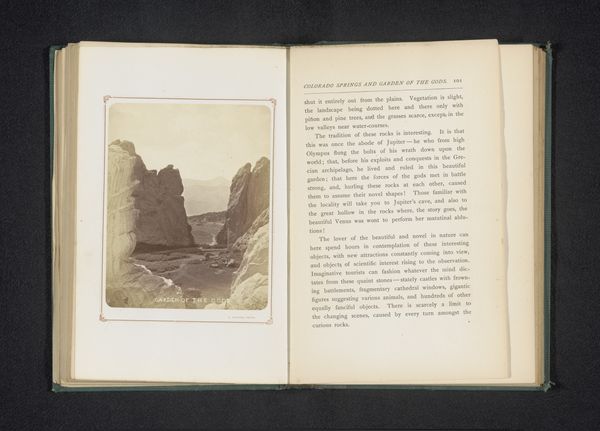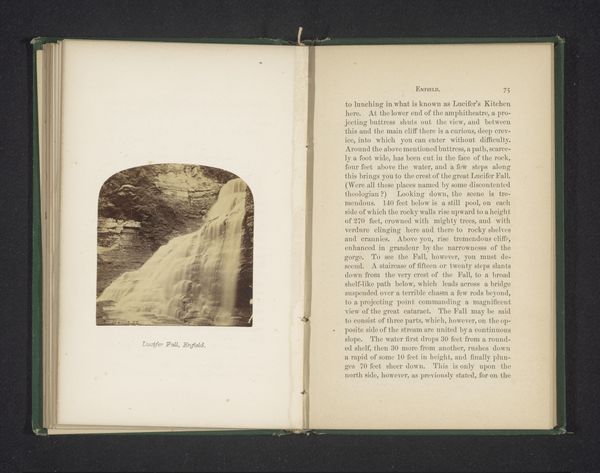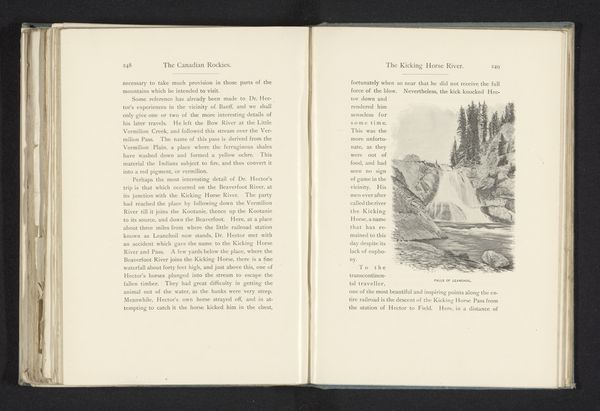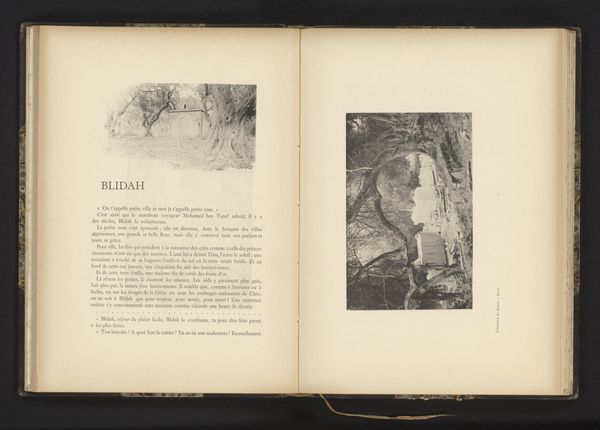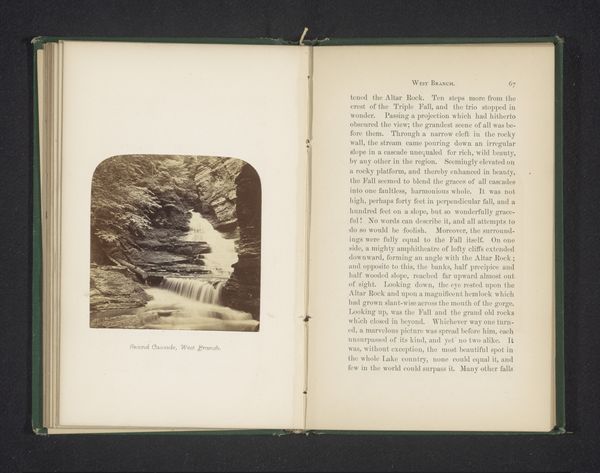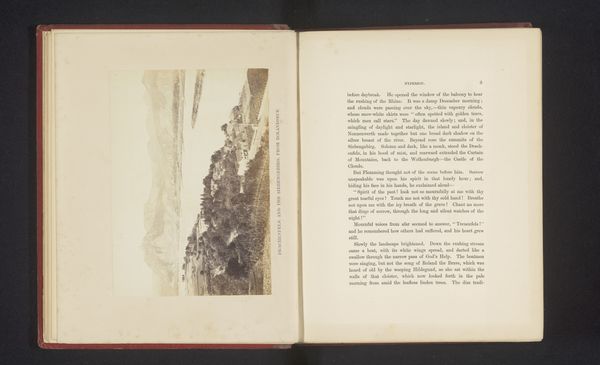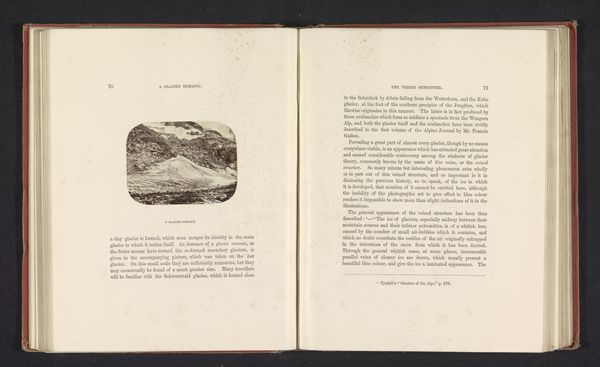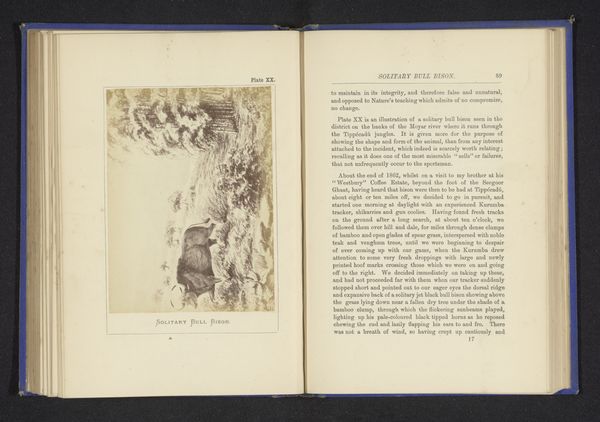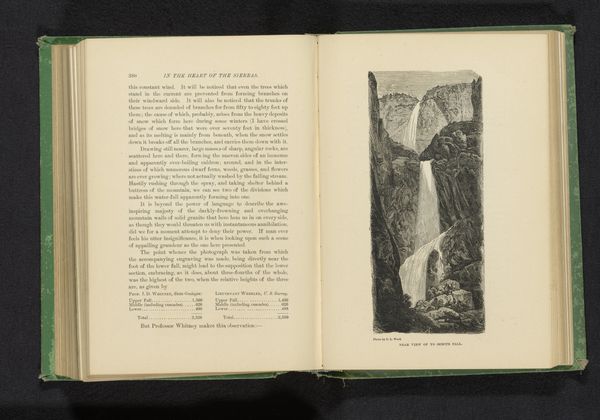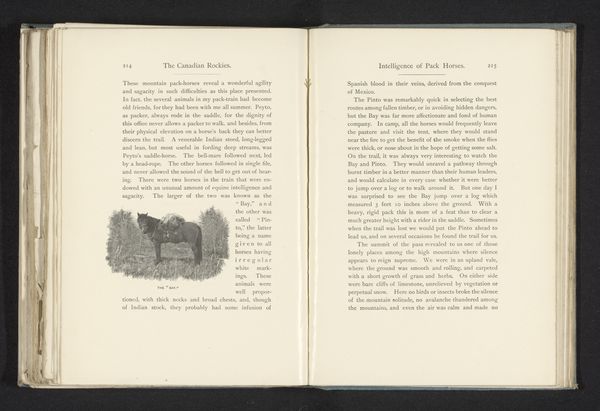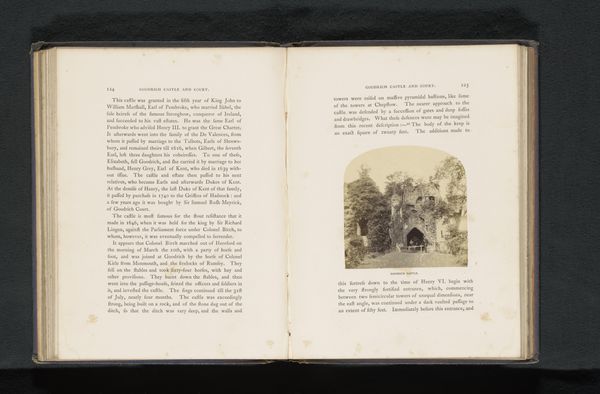
print, daguerreotype, photography, gelatin-silver-print
# print
#
landscape
#
daguerreotype
#
waterfall
#
photography
#
gelatin-silver-print
Dimensions: height 80 mm, width 78 mm
Copyright: Rijks Museum: Open Domain
Curator: So, tell me about this work, “Pulpit Fall, Buttermilk Creek” photographed sometime before 1869, and attributed to J.C. Burritt. What are your initial thoughts? Editor: Well, the first thing that strikes me is the composition, almost theatrical in its presentation of the waterfall. The image has a gentle tone to it and the water falling into the creek grabs all of your attention right away. What do you see in this photograph? Curator: As a historian, I see this photograph as a testament to the rise of tourism and leisure activities in the mid-19th century, and this view in a book emphasizes the desire to frame the landscape for consumption. Why do you think photographs of landscapes like this were becoming popular at this time? Editor: Maybe it was because people were curious about places they hadn’t seen before and the book served as a promotional guide? And also that the photos let them bring a piece of it home? Curator: Precisely. Think about the expansion of the railways and the increasing affordability of travel. This image, likely originally a daguerreotype, offered a relatively accessible and reproducible way to document and share these experiences, but one that catered mostly to privileged classes. Do you think this image encourages viewers to experience nature or to consume it? Editor: I think it might do both! Experiencing through consuming sounds a bit ironic though! This conversation has really broadened my understanding of how a seemingly straightforward landscape photograph can be embedded in larger socio-economic trends. Thanks! Curator: Indeed. Seeing art as part of broader social systems reveals a great deal. My pleasure!
Comments
No comments
Be the first to comment and join the conversation on the ultimate creative platform.

